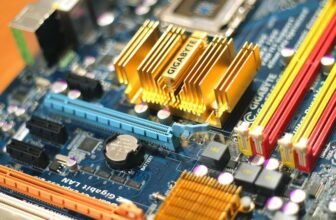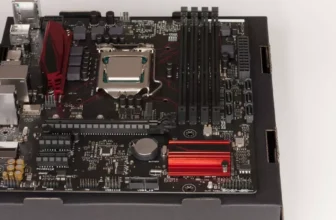
When considering how to upgrade your gaming rig with the best components, it's essential to focus on key elements that can elevate your gaming experience to the next level. From choosing a CPU that maximizes processing power to upgrading your GPU for enhanced graphics performance, each component plays a crucial role in optimizing your system. But what about the often-overlooked aspects that can make a significant difference in your gaming rig's overall performance? Stay tuned to discover the lesser-known components that can truly take your gaming setup to new heights.
Choosing the Right CPU
When selecting a CPU for your gaming rig, prioritize processing power and compatibility over everything else. The CPU is like the brain of your system, so you want it to be able to handle all the demanding tasks that come with gaming. Look for a CPU with a high clock speed and multiple cores to ensure smooth gameplay and seamless multitasking.
When choosing a CPU, make sure it's compatible with your motherboard. Check the socket type and chipset to ensure a proper fit. Opting for a CPU that isn't compatible can lead to performance issues and even damage to your system. Research the latest CPUs on the market and read reviews to see how they perform in gaming scenarios.
Consider future-proofing your system by investing in a CPU with room for upgrades. This will allow you to enhance your gaming experience down the line without having to replace the entire CPU. Upgrading your CPU can significantly improve your gaming rig's performance and ensure you stay ahead of the curve in the gaming world.
Upgrading Your GPU
To enhance your gaming experience, consider upgrading your GPU for improved graphics performance. The GPU, or graphics processing unit, is crucial for rendering images, textures, and effects in games. Upgrading to a more powerful GPU can significantly boost your gaming rig's capabilities, allowing you to play the latest titles at higher resolutions and frame rates.
When selecting a new GPU, consider factors such as performance, compatibility with your system, and budget. Look for GPUs with higher core counts, faster clock speeds, and ample video memory for smoother gameplay. Popular GPU manufacturers like Nvidia and AMD offer a range of options to suit different needs and preferences.
Installing a new GPU is relatively straightforward. Start by uninstalling the old GPU drivers, powering down your system, removing the old GPU, and inserting the new one into the PCIe slot. Secure it in place, connect any necessary power cables, and install the latest drivers from the manufacturer's website.
Upgrading your GPU can breathe new life into your gaming rig, providing you with stunning visuals and improved performance in your favorite games.
Enhancing RAM Capacity
Consider upgrading your gaming rig's RAM capacity to boost performance and multitasking capabilities. RAM, or Random Access Memory, is crucial for ensuring smooth gameplay and seamless multitasking while gaming. By enhancing your RAM capacity, you allow your system to store more data for quick access, reducing loading times and preventing lag spikes during intensive gaming sessions.
Upgrading your RAM can lead to improved frame rates, faster loading times, and enhanced overall system responsiveness. With more RAM, your gaming rig can handle larger game files and run multiple applications simultaneously without slowing down. This is particularly beneficial for gamers who enjoy streaming, video editing, or running virtual machines alongside their gaming sessions.
When considering a RAM upgrade, make sure to check your motherboard's compatibility and choose RAM modules that match your system's specifications. Installing additional RAM modules or replacing existing ones with higher-capacity sticks can significantly enhance your gaming experience by providing the necessary resources for your system to perform at its best.
Installing a Faster SSD
Enhance your gaming rig's performance by upgrading to a faster SSD. By installing a faster solid-state drive (SSD), you can significantly improve your gaming experience. SSDs offer faster data retrieval speeds than traditional hard disk drives (HDDs), reducing game loading times and providing smoother gameplay. When selecting an SSD for your gaming rig, consider factors like storage capacity, read and write speeds, and durability.
To install a faster SSD, begin by backing up your data to ensure you don't lose any important files during the upgrade process. Next, power off your computer, open the case, and locate the existing storage drive. Carefully disconnect the cables and remove the old drive. Install the new SSD in its place and reconnect the cables.
Once the physical installation is complete, you'll need to clone your existing drive's data to the new SSD or perform a fresh installation of your operating system and games. After ensuring everything is working correctly, enjoy the enhanced speed and performance of your upgraded gaming rig with the new SSD.




